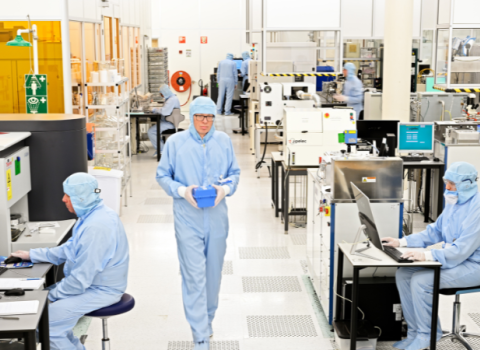A new report shows that research projects at The University of Texas at Arlington contributed nearly one-third of a billion dollars—$302.1 million, to be exact—to the national economy through 976 vendor contracts and subcontracts between 2018 and 2023. Of those contracts, 124 went to small businesses and 103 to minority- or woman-owned businesses.
“The phenomenal research coming from UT Arlington faculty and students is not only helping solve problems and improve lives, but it’s also an important economic driver in North Texas and beyond,” said Kate C. Miller, vice president for research and innovation at UTA. “This report demonstrates the powerful ripple effect UTA research has throughout our local, regional and national economies.”
Produced by the Institute for Research on Innovation and Science (IRIS), this report includes the latest figures about the impact of UTA’s research spending on specific industries. For example, between 2018 and 2023, companies in the educational services sector received contracts for research-related services from UTA worth $39.1 million; companies in the professional, scientific and technical services sectors, $34.8 million; manufacturing companies, $25.9 million; and companies in the information sector, $23 million.
In 2023 alone, UT Arlington researchers spent $43.6 million on research-related goods and services in 263 U.S. counties. Notable in the report is that 58% of research spending from UTA was spent on in-state vendors compared to an average of 50% for Texas A&M, the University of North Texas, UT Dallas, and UT San Antonio—the four other Texas schools participating in IRIS.
Much of the external money that came to UTA for research originated as federally sponsored research grants from organizations like the National Science Foundation, National Institutes of Health and the U.S. departments of Defense, Transportation, Commerce and Energy. Additional research funding came from philanthropic organizations and state and local governmental organizations.
This piece of research spending is just a small part of the annual economic impact created by UT Arlington each year. As a Carnegie R-1 “Very High Research Activity” institution, UT Arlington’s approximately 270,000 alumni occupy leadership positions at many of the 21 Fortune 500 companies headquartered in North Texas and contribute to the University’s $28.8 billion annual economic impact on Texas.
IRIS created the report by linking UT Arlington’s administrative data with industry and workforce data from business publisher Orbis, which contains information on characteristics of businesses, such as whether they are owned by minorities or women. The resulting reports masked the identities of any individual organizations once the University administrative data was matched with the Orbis datasets.
IRIS is a national consortium of more than 100 leading research universities organized around an institutional review board-approved data repository housed at the University of Michigan.
“A thriving research enterprise requires resources and expertise that go beyond the borders of a university’s campus, and it can include everything from lab equipment to building contractors,” said IRIS Executive Director Jason Owen-Smith. “IRIS helps universities share the tangible but often overlooked ways that research universities make life better for all of us, not just through critical scientific advances but also by helping to drive everyday economic and social investments in every county in the country.”
This article was first published on 11 October by UTA.





 A unique international forum for public research organisations and companies to connect their external engagement with strategic interests around their R&D system.
A unique international forum for public research organisations and companies to connect their external engagement with strategic interests around their R&D system.